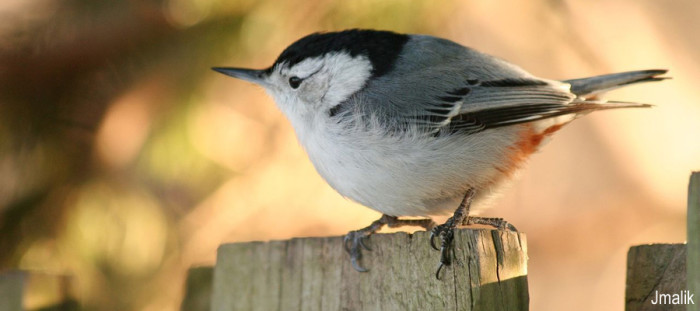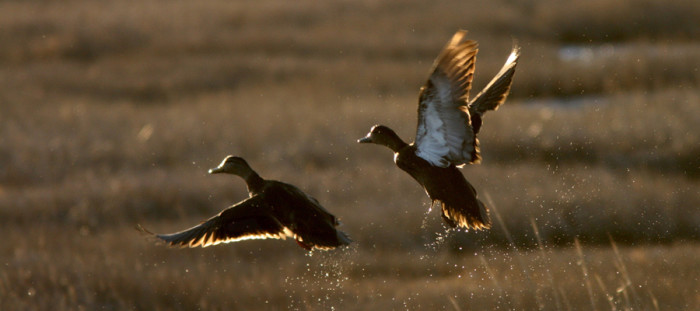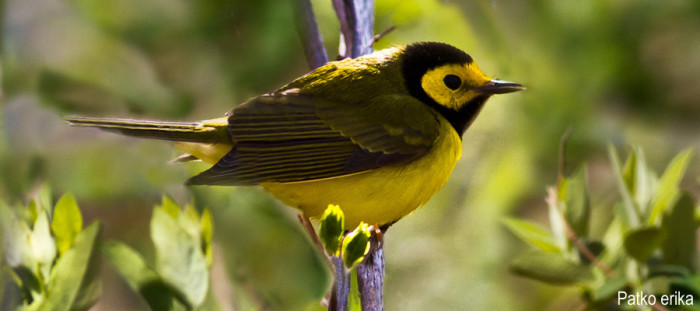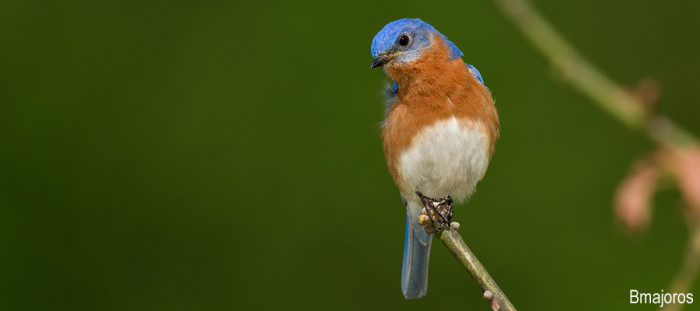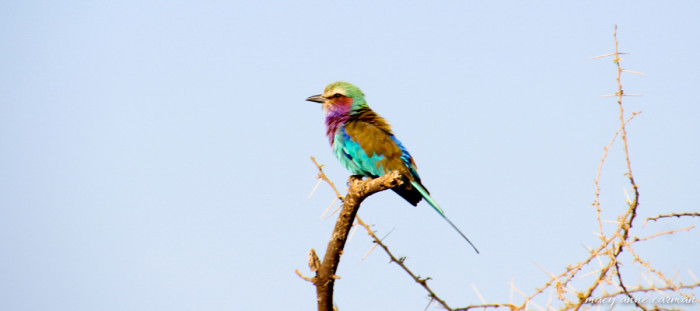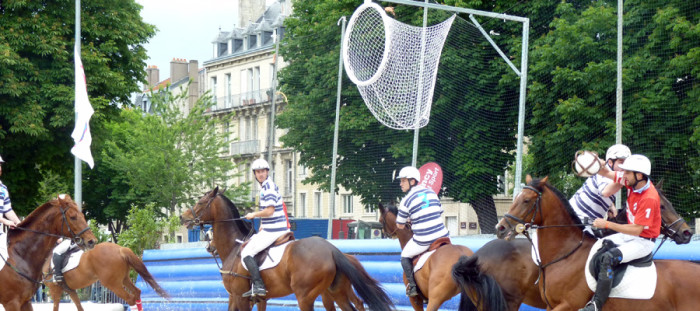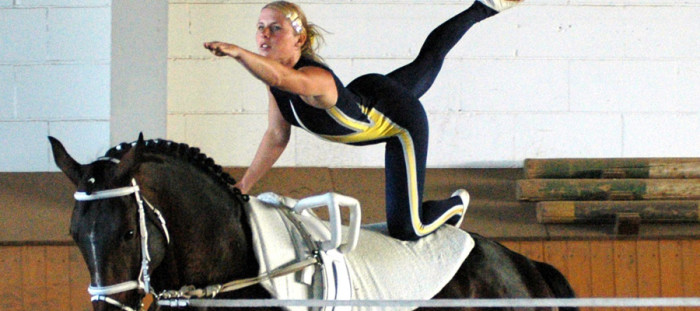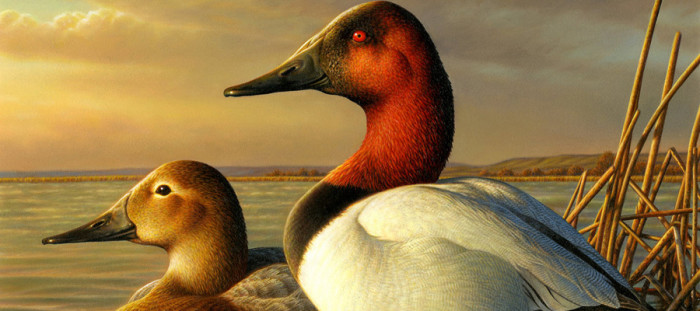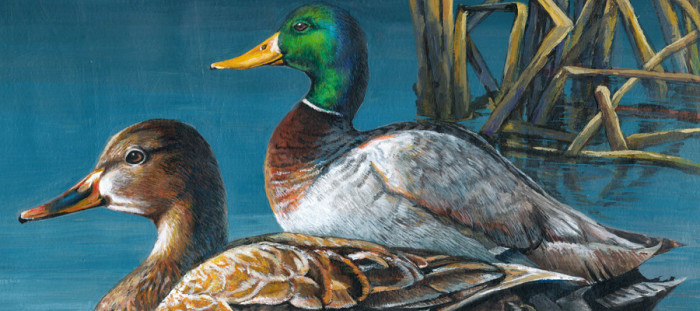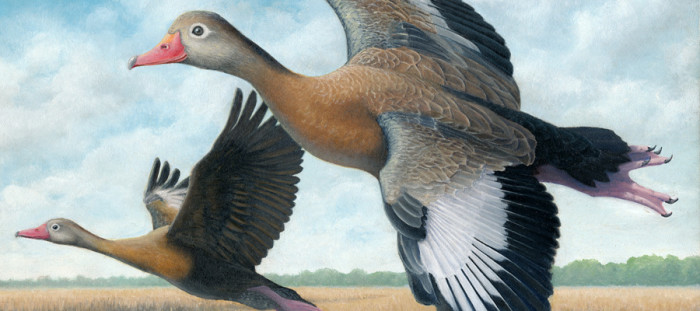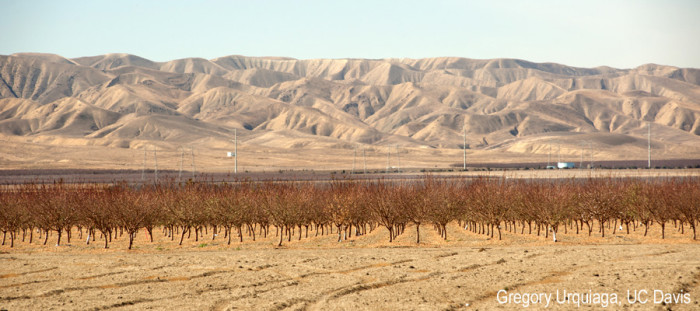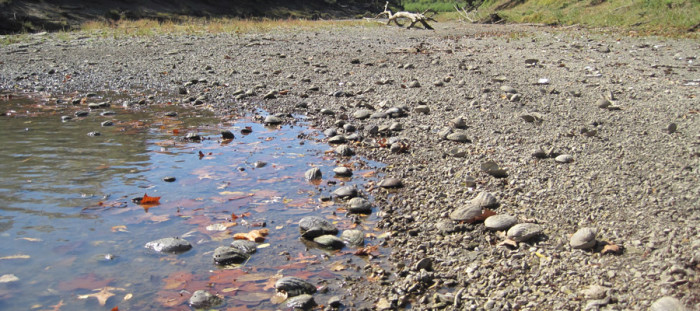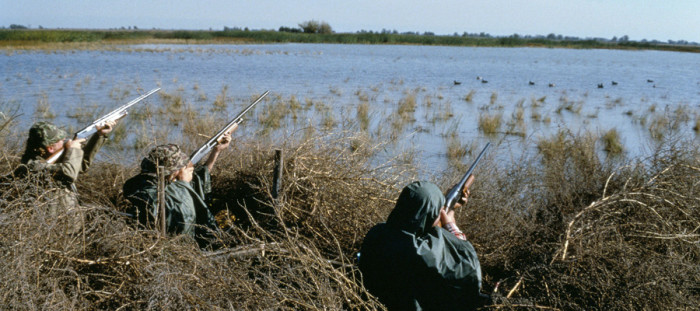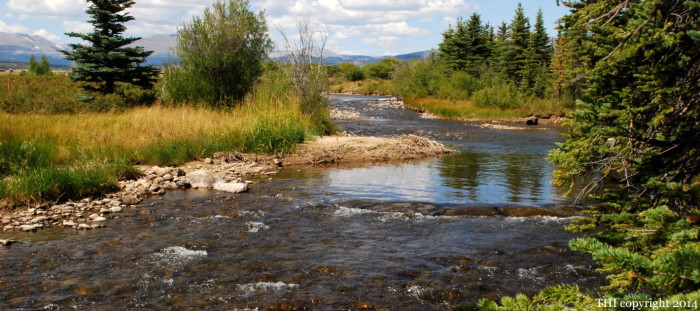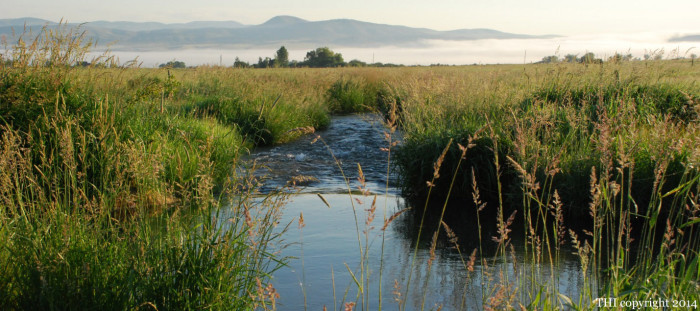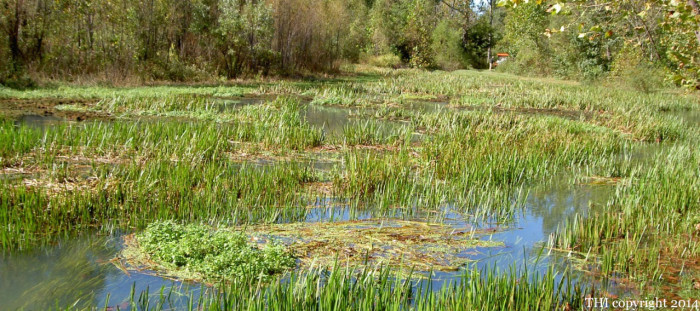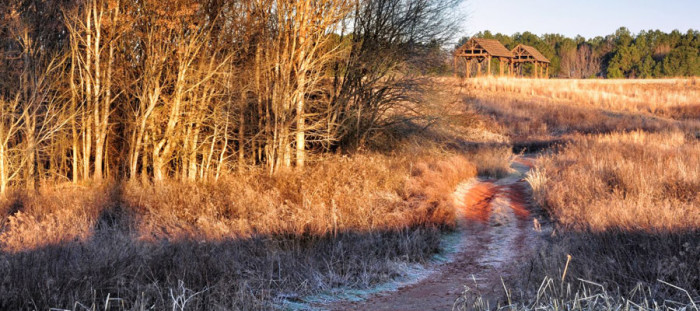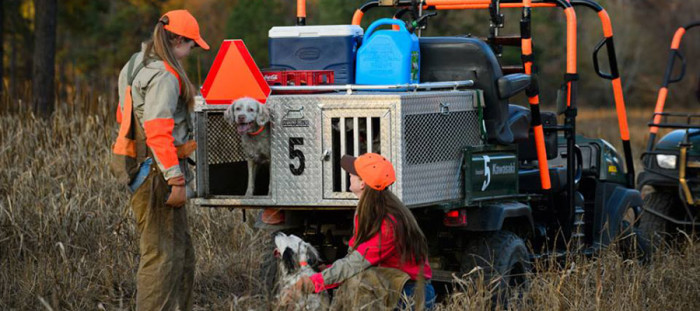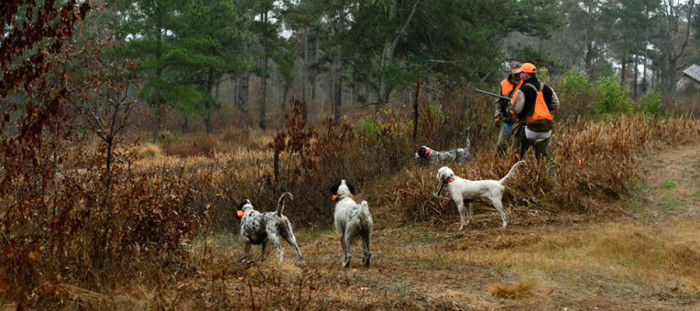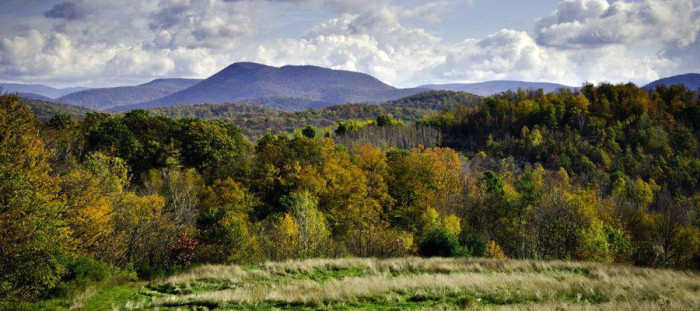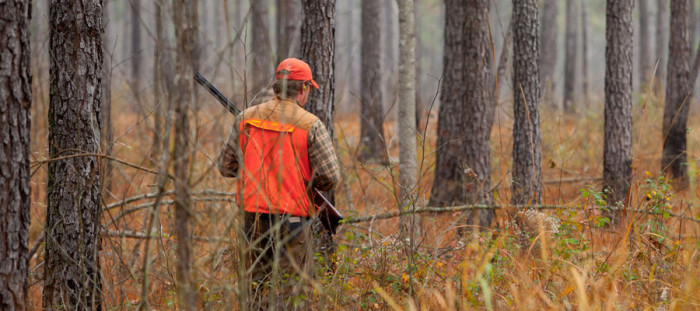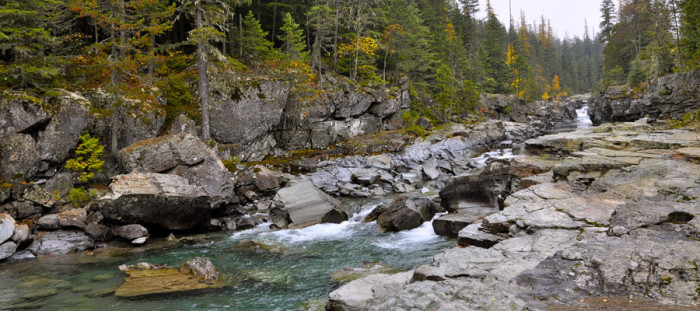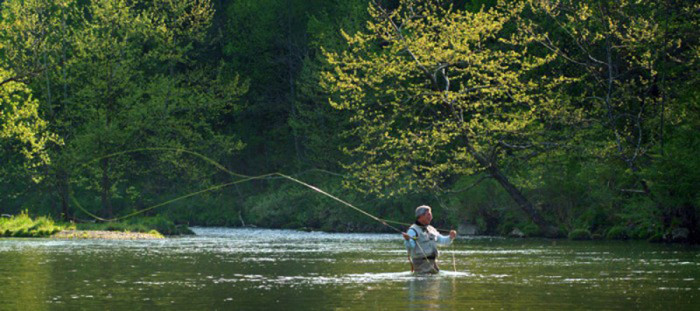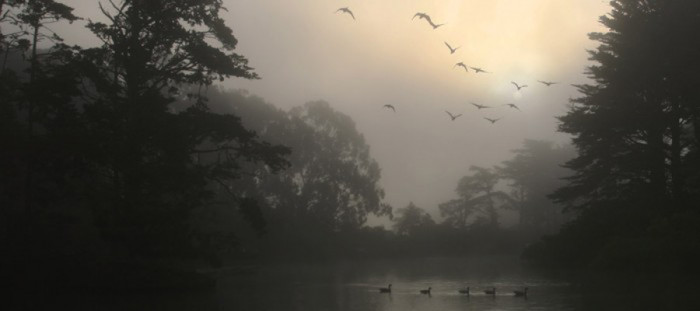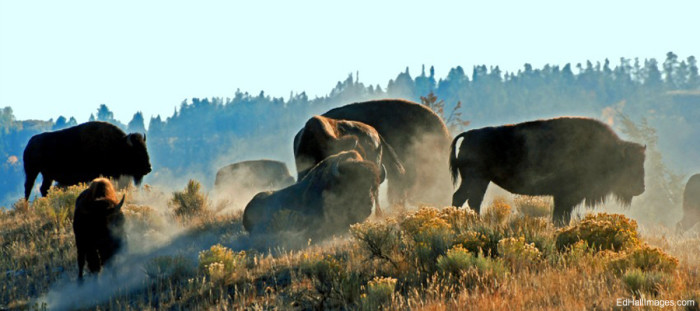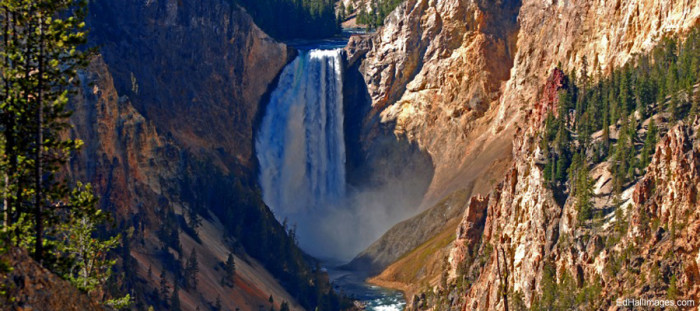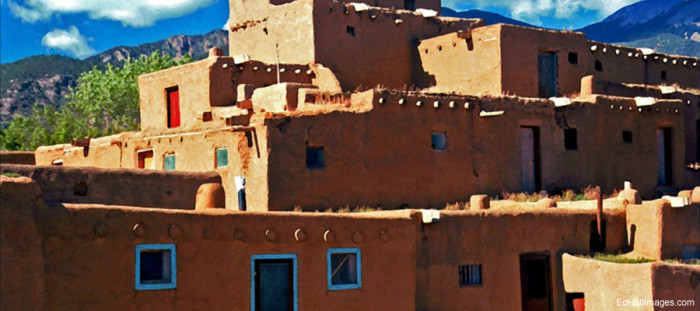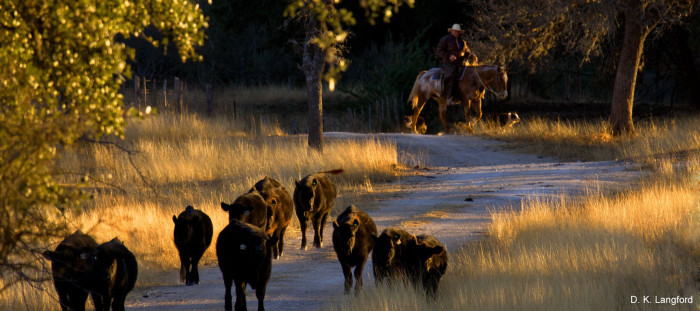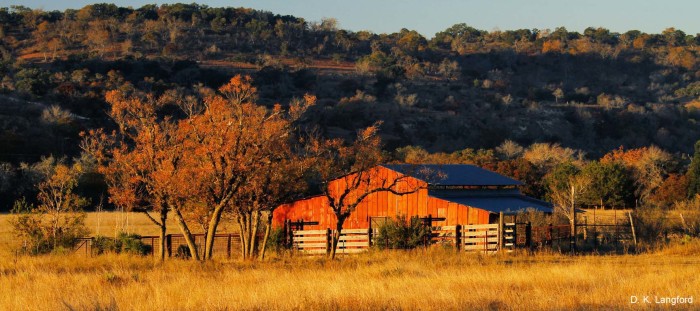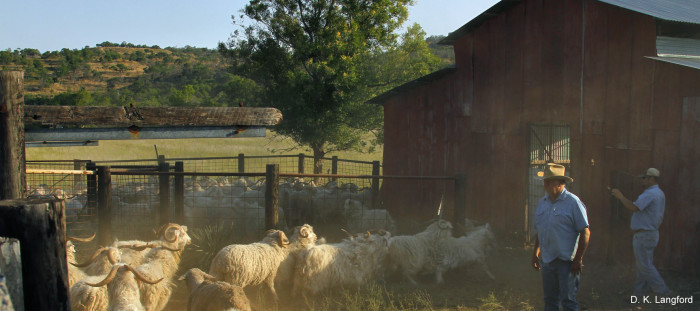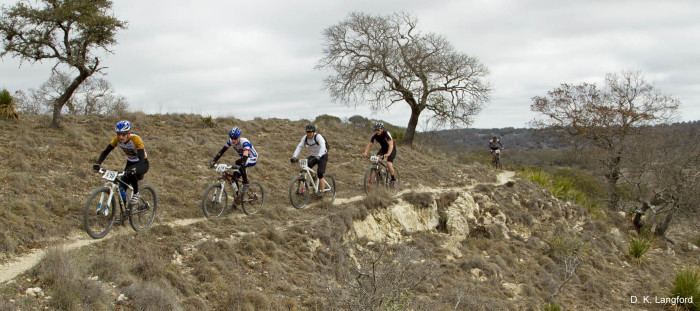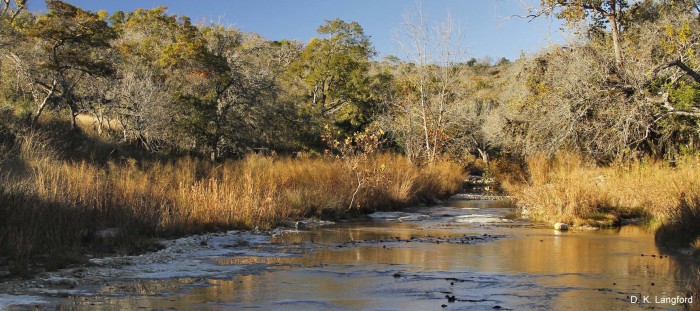Recently, the World Series of Birding was held in New Jersey and 76 teams traveled around the state for 24 hours to try to identify as many different species of birds as possible by sight or sound. It garnered extra attention this year because of the ever present debate about technology.
As a long pursued hobby and research endeavor, birding has not been immune to the challenging questions that the increase and spread of technology has spurred in a variety of activities and the competitive nature requires some consensus on fair play. The traditional birders favor a style dependent on study and careful observation using no technology. In contrast, much of the younger generation depends on high quality cameras and iPhone apps with field guides and bird song recordings to assist them with their identification process.
Competitive birding has long been proud of it honor system but with the advent of technology allowing birders to prove their sightings there has been some debate about whether or not to include it. Some worry that this systems promotes the “shoot first, identify later,” mindset and will contribute to a loss in the art of bird identification. Proponents of the technology suggest that these advances contribute to the education of birders and make it more welcoming for new birders, which have increased in part because of birding’s role in two blockbuster movies, “The Big Year,” and “A Birder’s Guide To Everything.” This increased popularity, combined with improved accessibility to new birders, has the potential to boost support for conservation- the cornerstone of birding and the World Series in particular.
People and teams participate in the 24 hour birding marathon for bragging rights, the Urner-Stone Cup, and the knowledge that they have contributed to conserving the species and their New Jersey habitat. All of the money raised by the teams in the form of private and corporate pledges per species seen, usually about $600,000, goes towards the New Jersey Audubon Society for conservation work. There are different categories of competition divided by experience level and spatial area covered in the 24 hours. Some teams chose the “big stay,” where they can only count species they see from a given location of just a few square yards. While the state parks and refuges are common stopping points for teams along the way, birds on private property are also theirs for the counting and make up a considerable portion of habitat for birds within the state.
For now, the World Series competition relies on the honor system, no photo evidence required but some questioning by other teams is expected for rare sighting. Teams cannot use bird calls to attract birds or play them in the field to help identification. They are only allowed to use these digital tools in their vehicles as a resource to refresh their memory. It will certainly be interesting to see how birding grapples with the advent and incorporation of technology in the years to come.
If you are interested in improving your own property’s bird habitat please contact us for more information at rmckee@fieldsport.com.
Common Ground from RED REEL on Vimeo.
This short film introduces the story of the proposed Rocky Mountain Front Heritage Act, a “made-in-Montana,” policy compromise to define the future of the wilderness in Montana, especially that of the Bob Marshall Wilderness Area. Designated as protected wilderness in 1964 by the U.S. Congress, it contains over one million acres. However the Rocky Mountain Front, 400,000 unprotected acres that border “the Bob,” is currently unprotected from future development. Produced by RED REEL, it examines both the uniting and conflicting effect that wilderness protection can have on a community with heavily steeped tradition, heritage, and a way of life that depends on the land itself. Check out the website for the film at http://commongrounddoc.com/ .
While the World Cup may be over, for many that was not the highlight of this year’s world class competition. In a few short weeks the very best of equestrian talent and their fans from around the world will descend on Normandy, France to enjoy the World Equestrian Games.
Prior to 1990, each different equestrian discipline held its own separate world championship. However, a desire to create a platform for all of the Fédération Equestre Internationale sports spurred the creation of the games, first held at the Olympic Stadium in Stockholm, Sweden. Games were then held in The Hague, Netherlands; Rome, Italy; Jerez de Frontera, Spain; Aachen, Germany; and most recently, leaving Europe for the first time, in 2010, in Lexington, Kentucky.
Designed to be a celebration of the horse and the finest equestrianism the world has to offer, the games are held every four years, halfway between the summer Olympics, and run over two weeks. Aside from the disciplines themselves, they work to showcase the culture and art that the horse has influenced in the form of demonstrations, ceremonies, and education to connect the spectators, athletes, and local people.
Athletes will compete for world titles in 8 disciplines, with two additional exhibitions. The sports range from the well-known, like show jumping, dressage, and eventing (the three Olympic sports), reining, and endurance to more obscure like driving, para dressage, and vaulting. This year, the exhibitions will be of polo, and the lesser known horseball. Horseball has been likened to the game Quidditch, featured in the Harry Potter novels, and is reminiscent of a rugby- basketball hybrid played on horseback with a ball that has leather handles which teams try to get through net goalposts at the end of the fields. Horseball, which is most popular in France, is seeking a place in the next Olympics and inclusion in future World Equestrian Games so it will be an exciting display.
Of those disciplines being awarded titles, vaulting is one of the most unique. Individuals and teams complete gymnastic-esque theatrical routines on horseback to music. It originates from ancient roman military exercises, was included in circuses in the 12th century, and was adopted as the official equestrian discipline of Germany after the Second World War.
All in all, 76 countries will participate in the games at seven different competition venues in Normandy from August 23rd to September 7th. Follow the games at http://www.normandy2014.com/, and feel free to channel your FIFA world cup enthusiasm into cheering for the USA, which is in second place in the historic medal count 37 medals behind Germany who has 72. If the games get you excited about creating your own equestrian destination, please contact us at rmckee@fieldsport.com for ideas and assistance.
Photos: Finale du championnat de France de Horseball 2010 à Nancy (France) by Savant-fou
Vlag Equestrian Vaulting, Source: Catherina2
Steffan Peters Source: Phil Denton
A lot has changed since 1991. The price of a Federal Duck Stamp has not. For the last 23 years, duck stamps have cost $15. Members of the United States Senate are trying to change that. They hope to increase the price to $25.
The Federal Duck Stamp is officially named the Federal Migratory Bird Hunting and Conservation Stamp. Whatever you call it, it’s vital to waterfowl habitat restoration and protection.
According to the Ducks Unlimited website, “Since its enactment in 1934, the federal duck stamp program has protected more than 6 million acres of wetlands – an area the size of Vermont – through expenditures of more than $750 million. This has contributed to the conservation of more than 2.5 million acres in the Prairie Pothole Region, including the protection of 7,000 waterfowl production areas totaling 675,000 acres.”
The current price of the Duck Stamp is not up to date with inflation. In fact, the Federal Duck Stamp has lost 40 percent of its value because land prices have tripled since its price was last increased in 1991. With its buying power greatly reduced, the amount of habitat the Federal Duck Stamp can protect is also greatly reduced.
“For the last few years, I have actually been buying two duck stamps just to help conserve more waterfowl habitat. Nothing is more valuable in the fight to protect wetlands and nesting habitat than the Federal Duck Stamp. I absolutely believe the time has come to increase the price,” said Jeremy Stephens, a regional director with Delta Waterfowl.
Federal Duck Stamp sales matter immensely to waterfowl conservation because 98 percent of funds collected go directly to purchasing or leasing wetland habitat for protection in the National Wildlife Refuge System. Just to emphasize the point, that means 98 cents of every dollar spent on Duck Stamps is directly tied to on the ground habitat.
Whitney Twaney, a government affairs representative with Ducks Unlimited said, “Some people look at increasing the price of the Duck Stamp as a tax increase, but it’s absolutely not. Sportsmen, specifically waterfowl hunters, buy these stamps voluntarily.”
Sportsmen buy the stamps, yet the public benefits by having improved habitat for wildlife. This is just another example of hunter conservationists stepping up to do more than their share to protect habitat and promote healthy resources.
“The last duck stamp price increase occurred in 1991, when it reached its current level of $15. Back then gasoline was selling for $1 a gallon. Today a gallon of gas costs three to four times that amount. The price of land has likewise increased, but duck stamp revenues have not. We appreciate the introduction of a federal duck stamp increase bill by Senators Begich, Baucus, Coons and Tester to meet very real on-the-ground wetland habitat conservation needs. We are committed to seeing this legislation signed into law and look forward to working with senators on both sides of the aisle to enact this,” Ducks Unlimited CEO Dale Hall said.
Waterfowl hunters are a passionate group of conservationists. I doubt you will find many, if any, who are opposed to paying $10 more per year to hunt, when they know the trade off is protecting waterfowl for future generations.
This piece is a repost of an article written by Brandon Butler, the Executive Director of the Conservation Federation of Missouri.
Photos:
Georgia Duck Stamp 2013 Winning Artwork, Junior Duck Stamp Winner Best in Show by Euno Oh of Marietta, GA. Source: US Fish and Wildlife Service, Southeast Region
“Taking Flight” by Colin Williams, 2012 Georgia Junior Duck Stamp Best in Show Source: US Fish and Wildlife Service Southeast Region
2013 Federal Contest Winner, Federal Duck Stamp Contest, Adam Grimm of South Dakota Source: US Fish and Wildlife Service
Our previous post regarding how the true value of land can be enhanced by improving water resources simply states that “although there is plenty of water on Earth, it is not always in the right place, at the right time and of adequate quality.” Water use and allocation is a controversial topic, and here in the US we are beginning to see the impacts that climate change is already having on biodiversity, field sports, outdoor recreation and agricultural production in water stressed regions. One such example is California, where improvements in irrigation technology and a sense of hardy determination as well as an unusual wet-spell during initial land use decisions have created a hub of agricultural production despite the natural limitations of water availability.
California depends on good winters to provide snowpack in the mountains that will feed rivers and groundwater sources for the remainder of the year. In 2012, California was the top producing state in the United States with the agriculture industry, bringing in $44.7 billion, predictions of 15% less precipitation on average pose a huge threat to the future of the industry.[1] But a decrease in snowfall has contributed to drought conditions and in early 2014; Governor Jerry Brown declared a state of emergency as they entered their third straight dry year.[2]
This impending crisis is a practical example of a lack of foresight in land planning and land use, and while the agricultural industry will suffer, the consequences do not end there. Scarcity of water will lead to lower crop production, leading to decreased supply of popular produce and an increase in price which will make basic fresh foods out of reach for many US families. Tourism is suffering as well as those employed in the outdoor recreation; whitewater rafting has suffered due to low water levels, a father’s day fishing tournament was moved because the lake was too shallow for the boats, and state officials have prohibited sport fishing along sections of 20 rivers with more closures expected this fall.[3]
Species other than us are already paying the price for California’s water use patterns, including species typically involved in outdoor recreation and field sports. The waterfowl breeding population was down by 15% in 2013 and the deer population dwindling to less than 500,000 (a rapid decrease from the 2 million that existed in 1960’s) from migration and an increase in disease due to crowded conditions in remaining habitat.[4] Raptors are having one of the worst breeding seasons on record courtesy of habitat shifts that have reduced their available prey.[5] Also impacted are the fish, especially salmon and those employed by the industry that generates $1 billion worth of economic activity. Migratory routes for the endangered Coho salmon are drying up, and a drop in numbers has led to a bar on salmon fishing with only a few hatchery exceptions.[6] In early June, millions of rainbow and steelhead trout were evacuated from the Nimbus and American River Hatcheries, some of the most productive in California, because the water was expected to reach lethal temperatures of 78˚, up from the average 65˚.[7]
Other areas in the United States have less-stressed water resources, and could be better locations to grow the crops that California has become known for such as produce and nuts. The orchard crops will suffer the most during future droughts, because unlike broccoli fields they require water and cannot be left fallow during years of extreme shortages. However, this prediction has not slowed the growth of nut orchards in the state. Fueled by China’s demand, the area of pistachio cultivation almost doubled between 2006 and 2011 while the area devoted to almond orchards increased by over 10%.[8]
While it remains to be seen how California will adapt to shifts in climate ranges that feed their economic activity, and how much biodiversity will be lost, it provides a valuable example of how critical thoughtful and comprehensive land use will only continue to become more important to protect economic and natural resources. To learn more about how your property’s potential can be maximized using existing natural resources and ecosystem services, please contact us at rmckee@fieldsport.com.
This piece written by Field Sport Concepts, Ltd. staff member Macy Anne Carman.
[1] http://www.cdfa.ca.gov/statistics/pdfs/2013/AgStatsOverview.pdf
[2] http://www.acwa.com/content/2014-drought-watch
[3] http://www.latimes.com/business/la-fi-drought-tourism-20140617-story.html
[4] http://climate-connections.org/2014/02/20/drought-threatens-california-wildlife/
[5] http://thinkprogress.org/climate/2014/06/06/3445705/california-drought-raptors/
[6] http://climate-connections.org/2014/02/20/drought-threatens-california-wildlife/
[7] http://news.yahoo.com/california-drought-forces-evacuation-trout-hatcheries-192904785.html
[8] http://www.acpistachios.org/pdf/2011Statistics.pdf, http://www.nass.usda.gov/Statistics_by_State/California/Publications/Fruits_and_Nuts/201305almac.pdf
The following comes from Field Sport Concepts affiliate Trout Headwaters, Inc. and follows up on our post “True Value of Land”.
Rivers, streams, and wetlands play host to an immense variety of species, many of them microscopic. Whether reducing excessive erosion or enhancing habitat for fish, we need not only tread lightly on the delicate ecosystem that exists, we need to strive to protect and enhance it. Habitat loss and fragmentation are the greatest threats to species biodiversity. In our nation’s more arid environments, the vast bulk of all biodiversity is found in the increasingly fragile riparian buffers of our watersheds. Healthy floodplains and other ecosystem functions rely directly on vital intact buffers. For these important reasons, conservation and restoration activities must increasingly focus on repair, renewal, and preservation of these precious riparian areas.
The long-term benefits associated with restoration are well-documented and include; increased property values, increased revenues associated with tourism and outdoor recreation, increased fish and game revenues, and avoided costs associated with improved ecosystem services. Intact and restored environmental resources have an aesthetic value for which there is higher demand than for degraded resources. Enhanced natural aesthetics from restored ecosystems also attract outdoor recreation enthusiasts and tourists. With a national outdoor recreation industry that generates $289 billion in retail sales and supports 6.4 million jobs per year, there is ample opportunity to capture recreation spending in newly restored areas.
The value of ecosystem services supplied by healthy, functioning, and climate-ready floodplains and wetlands is increasingly understood and appreciated. With tangible values identified, demand for restoration professionals and installation specialists will continue to grow.
The supply of water available for our use is limited by nature. Although there is plenty of water on Earth, it is not always in the right place, at the right time and of adequate quality. We all know water is essential to life. Our rivers, streams and wetlands are the collectors, filters, conveyors, and storage compartments for our nation’s fresh water supply.
Significant human-caused changes to wetlands, rivers and streams have resulted in a dramatic reduction in both water quality and quantity across the U.S. and the world. In natural, undisturbed ecosystems, water falls on vegetation, drips onto the soil, percolates into the soil and slowly migrates down drainage into catchments like streams and wetlands.
Some 70 percent of urban water quality problems are the result of contaminated stormwater runoff. Runoff from developed areas can contain oil, grease, excessive nutrients, pathogens, and heavy metals. Agricultural runoff can similarly degrade rural streams and wetlands. Along with tons of topsoil, agricultural runoff can contain excessive levels of phosphorus, nitrogen and toxic pesticides. The accumulation of these compounds within certain watersheds has caused significant increases in nutrient delivery to important estuaries. Most scientists believe resulting changes in dissolved oxygen levels have caused a severe decline in seafood production along areas of our coasts, including the area known as the Gulf Dead Zone.
On many rivers and throughout the remaining wetlands of the U.S., multiple impacts of development and inappropriate land use are affecting the health, productivity and use values of freshwater resources. Many of the potential effects of disturbance are cumulative.
Within a single watershed we often see impacts from roads, irrigation withdrawals, return flows, agricultural chemicals, forest management activities, recreational use and residential, commercial and industrial development. Restoration activities should be designed to reduce or eliminate these ongoing disturbance factors. Simple changes in management, such as the protection and restoration of riparian areas, creation of buffer strips in cropland, or management of livestock access to riparian areas, can each substantially reduce undesirable cumulative effects.
Each sustainable aquatic resource renewal project matters. Today we face record consumption, uncertain supplies, and growing demands for protection from flooding and pollution. The health and economic effects of a shortage of clean water are matters of great concern.
While the magnitude of the problems facing our freshwater resources can seem overwhelming, each sustainable project that renews and restores healthy floodplain function, even to a portion of a stream, does make a difference. Only one inch of rain falling on one acre represents 27,154 gallons of water. One inch of rain falling on one square mile (640 acres) represents 17.38 million gallons of water to be naturally filtered, conveyed and stored.
Lush, healthy riparian areas are some of the most important ecosystems on Earth, and renewal and repair of these systems has multiple benefits for biodiversity, water quality, bank stability, erosion control, water quality and water quantity. Real ecological function relies on these intact, healthy ecosystems.
As lower-cost, sustainable, vegetative approaches to aquatic resource renewal and repair become more accepted and trusted, we will begin to see real progress in the fight to save our freshwater resources.
To learn more about how restoring aquatic resources on your property can help enhance its economic and aesthetic value contact Trout Headwaters, Inc. at 800-218-8107 or Field Sport Concepts at 434-979-3846.
Following up on our last post by Ed Belak, True Value of Land, this is the first in a series of posts having to do with how to enhance the value of land. It comes from our friend Tee Clarkson, the Outdoor Columnist for the Richmond Times-Dispatch. Tee also runs outdoor fishing and biking programs for kids as well as student travel and eco-service trips http://virginiaoutside.com/ .
The decline of the bobwhite quail over the last 100 years is well chronicled. Stories of wild coveys by the dozens are preserved mostly on the pages written by classic southern outdoor writers like Havilah Babcock and Nash Buckingham.
Regardless of whether one owns property in the southeast or the species of quail on one’s property, whether Bobwhite, Gamble, California, or one of the several other species which inhabit 44 of 50 states, property values increase with the presence of each wild bird.
Biologist Marc Puckett, Small Game Project Leader and Quail Recovery Initiative Coordinator for the Virginia Department of Game and Inland Fisheries, recommends an ideal habitat for bobwhite quail that includes roughly 30 to 40% mixed warm season grass and weed fields, 15 to 25% thicket cover-like blackberry, plum and greenbrier patches, and then about 30 to 40% annual weedy fields.
While some landowners may choose to go with extensive habitat restoration programs, sometimes all that is needed to bring the birds back is allowing native plants to repopulate areas where they may have lost ground. Plowing up invasive species like fescue as well as periodic burns in some areas combined with relatively simple practices like creating riparian buffers, planting shrubs, and allowing the less productive edges of cultivated fields to turn fallow are just a few of the ways landowners might better manage their land for quail.
Although the wild populations may not immediately bounce back to huntable numbers, property owners can create habitat that increases the experiences one may have on the land (through a well-managed quail release program for example) thus making their property more valuable to sportsmen. A thousand acres with eight coveys on it is worth a lot more than the same number of acres right down the road that only holds two.
One thing for landowners to remember as well is that what is good for the quail is usually good for multiple species of wildlife from songbirds, to woodcock, to rabbits, to a host of others. Creating good habitat rarely benefits just one species, and therefore, adds multiple layers of the value to a property.
Field Sport Concepts affiliate Ed Belak offers the following example of how good quail management can increase the monetary value of land: A relatively large plantation of approximately 4,700 acres in the Southeast that has been intensively and successfully managed for wild quail was recently sold for $4,042 per acre. The average for quail plantations with similar infrastructure that rely principally on pre-season released quail, most of which are about 1,700-2,500 acres is about $2,500 – $3,000 per acre.
If you believe we can be of assistance in the planning of your land please contact us at rmckee@fieldsport.com
The following is from our good friend and colleague Ed Belak founder of Global Sporting Advisors, LLC (www.globalsportingadvisors.us). It highlights GSA’s approach to land valuation associated with hunting and angling real estate as well as hunting and fishing lodge businesses while supporting Field Sport Concepts’ assertion that planning for recreational land-use brings added value to rural lands.
In America some ranch brokers and realtors tend to sell sporting properties by the acre based on “comparable sales” with little regard for the “real property” — the rights and privileges associated with the ownership or lease of real estate. In terms of hunting or angling real estate, the right to pursue, within legal means, the fish or game on that land affects the value of the “real property”. It is additive to the value of the real estate and its improvements (buildings, roads, bridges) and provides the truest value of a particular piece of land. What is important to note is that the quality of the right to pursue is influenced by the wildlife or fisheries management afforded the raw land, stream, lake or river. And unless a river is in its natural pristine state– say a beautiful brook trout river in Labrador producing 8-pound wild native brook trout, most land that is actively managed for wildlife or fish is worth more than land that is not managed. For example, a well-managed grouse moor in the UK is worth more than an unmanaged moor because it produces more brace of wild grouse. A section of Michigan Northwoods that is small block clear cut to provide edge and various ages of aspen is worth more because it will produce more wild ruffed grouse than unmanaged land. A trout stream that is enhanced by bank stabilization, rock placement and narrowing the surface to volume ratio will produce more trout than a stream that is left to wander all over its floodplain. GSA is unique in its approach in valuing the quality of the real property associated with hunting and angling real estate, or with a hunting or fishing lodge business. The approach creates educated buyers and sellers and can also be applied to buy side assignments (how much should I really pay for that land, or business?) or sell side assignments (what is my property or business really worth and why?)
That is the gist of the GSA approach.
For more information contact Ed Belak (erbgsa@gmail.com) at Global Sporting Advisors or Robert McKee (rmckee@fieldsport.com) at Field Sport Concepts.
This is the final of a three part series from Field Sport Affiliate Sonja Howle of Famous Barns.
Like painting, drawing, and sculpture, photography can render powerful emotion and influence. Thomas Cole and the Hudson River School believed “art to be an agent of moral and spiritual transformation.”
One Hudson River School member, Thomas Moran, created pencil and watercolor field sketches of the northwestern corner of Wyoming that, when presented with the photographs of William Henry Jackson, also on that 1871 survey expedition, influenced Congress to christen Yellowstone America’s first national park in 1872.
The Taos Society of Artists created powerful images of New Mexico’s native pueblos, people and landscapes. These images were utilized masterfully by the railroad line that promoted tourism in the region on the way to California. Today Santa Fe is recognized as a national, if not international art center; and its annual Indian Market brings more than 80,000 people and over $100 million in revenues to the state and the region.
When you win the heart, the mind will follow.
Conservation photography’s power is no surprise. At the forefront of this movement is Cristina Mittermeier, the founder of the International League of Conservation Photographers (ILCP). She coined the term “conservation photography” and whether her subject is a native tribe being moved or a disappearing landscape, she has learned that she can create the most impact when the photographs have stories and champions behind them. She developed an entire campaign that includes letters to politicians, communication with like-minded organizations, the participation of other international photographers and open invitations to the media.
The Texas Images for Conservation Fund asked ranch owners to share their land with a photographer. The owner of the Santa Margarita Ranch saw his ranch through a new lens and in the process realized a new service and revenue stream. The Hillingdon Ranch’s David K. Langford is a photographic artist who not only shares the beauty of a healthy ranch in his new book, Hillingdon Ranch, Four Seasons, Six Generations, but also teaches new generations of ranch owners how to maintain that wealth.
Photography does not operate alone. The Yellowstone sketches, watercolors and photographs needed Dr. Ferdinand Hayden who led the Yellowstone expedition and shared those images with every member of Congress when he returned. The Taos Society of Artists needed the Santa Fe Railway’s marketing genius William H. Simpson. They were the champions who extended the impact of the art to conserve thousands of acres and secure the cultural foundations for future generations.
Isn’t that what you want to do?
Let Field Sport Concepts be your artist and champion. With emphasis on environmentally sound recreational use, revenue, open spaces and sustainability, our team of experts in planning, land and architectural design, construction, field and stream sports, conservation and preservation can help you realize your visions for your land, now and for future generations.
Field Sport Concepts’ expertise is in the development and implementation of plans which conserve open lands through environmentally sound recreational use. We believe that land which sustains itself by producing income as open space today is land most likely to remain open space for generations to come.
For more, contact Sonja Howle at Famous Barns and Robert McKee at Field Sport Concepts.
Field Sport Concepts’ expertise is in the development and implementation of plans which conserve open lands through environmentally sound recreational use. We believe that land which sustains itself by producing income as open space today is land most likely to remain open space for generations to come. This post is the second in a series from Field Sport Concepts Affiliate Sonja Howle of Famous Barns.
As you explore the architecture of San Antonio and Texas, one name comes up again and again. Alfred Giles. Giles was born in Hillingdon, Middlesex, England in 1853 and after years of architectural study in London, he moved to San Antonio in 1873. Many of the state’s most remarkable county court houses were designed by Giles; his work is showcased at Fort Sam Houston’s Military Base, in Officers’ Quarters, Barracks and the famous Quadrangle. He built mansions, carriage houses and commercial structures throughout Texas and Mexico, since he also had an office in Monterrey.
In 1885 he purchased a 13,000 acre ranch in Kendall County with his brother-in-law and partner Judge John Herndon James. They bred registered Aberdeen-Angus cattle and angora goats. They called the place Hillingdon Ranch.
Remarkably, 129 years and six generations later, the ranch is still owned by the Giles descendants and remains a working ranch.
David Langford, Alfred’s great-grandson, lives there and is well-respected as a wildlife, western life and landscape photographer. He has not only won awards for his photographs in the Images for Conservation Fund competitions but he’s hosted photographers at Hillingdon Ranch as well. His career in photography is as significant as his lifetime commitment to conservation.
David and his family learned stewardship first-hand. They understand elements like the water cycle, soil regeneration, plant succession and the vital role of open spaces in everything from flood control to carbon sequestration.
His public service has involved over two decades as an Executive Vice President of the Texas Wildlife Association. (He is currently vice president emeritus). His efforts and those of that group ensured access to an invaluable tool to help rural landowners: the “wildlife management property tax valuation.” This allowed the land owner options with their resources: hunting, birding, wildlife and nature tourism, and it created a new level of stewardship.
David is in the middle of a book-signing tour for “Hillingdon Ranch, Four Seasons, Six Generations.” His new book illustrates the diversity and depth of his family’s Kendall County Ranch. And for my friends in the San Antonio area, David will be at the Patrick Heath Public Library in Boerne for a book signing during the Local Author Bookfest on March 1, 2014. I’ll stop by and say Hi – may see you there.
For more, contact Sonja Howle at Famous Barns and Robert McKee at Field Sport Concepts

